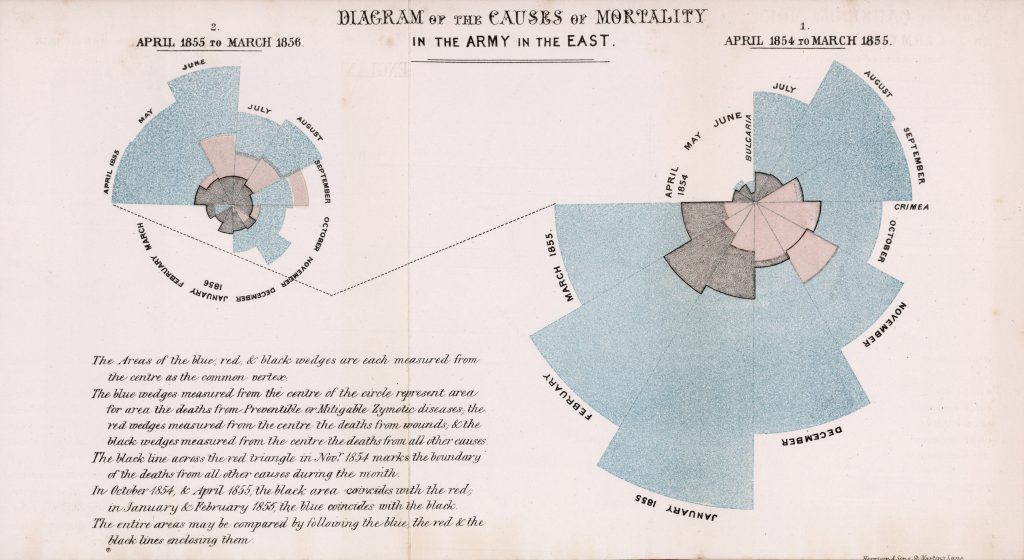9.1 Quality and Evidence-Based Practice Introduction
Learning Objectives
- Examine the role of utilization review and continuous quality improvement
- Describe the role of research in providing evidence-based, quality client care
- Identify the accreditation process for agencies
- Explain quality client care based on standards of nursing practice
- Examine the role of government, nursing, and other organizations in developing standards for quality nursing practice
- Explain how informatics systems promote quality and safety in health care delivery
- Examine the role of the nurse in workplace quality improvement processes
Florence Nightingale was a pioneer in the evaluation of quality nursing care. She identified the role of a nurse within the health care team and measured client outcomes to support the value of a nurse. See an example of one of Florence Nightingale’s diagrams comparing the causes of mortality in the Army in Figure 9.1.[1] Over the years nursing theorists and governing agencies have continued the evaluation work of Florence Nightingale by collecting data, using statistics, and creating reports to ensure the best quality care is being delivered to all clients.

In previous chapters we discussed how delegation, prioritization, and working as part of an interdisciplinary team all contribute to the delivery of effective and high-quality care. However, a common question by nurses and other health care stakeholders is, “What is the definition of quality health care?” A second question is, “How is quality measured and evaluated in health care to determine if standards are met?” A third related question is, “How do nurses incorporate research and evidence-based practices into their nursing practice?” This chapter will review how quality nursing care is defined, measured, and evaluated and how nurses implement evidence-based practices into their daily nursing practice.
- “Nightingale-mortality.jpg” by Florence Nightingale is licensed under Public Domain ↵

